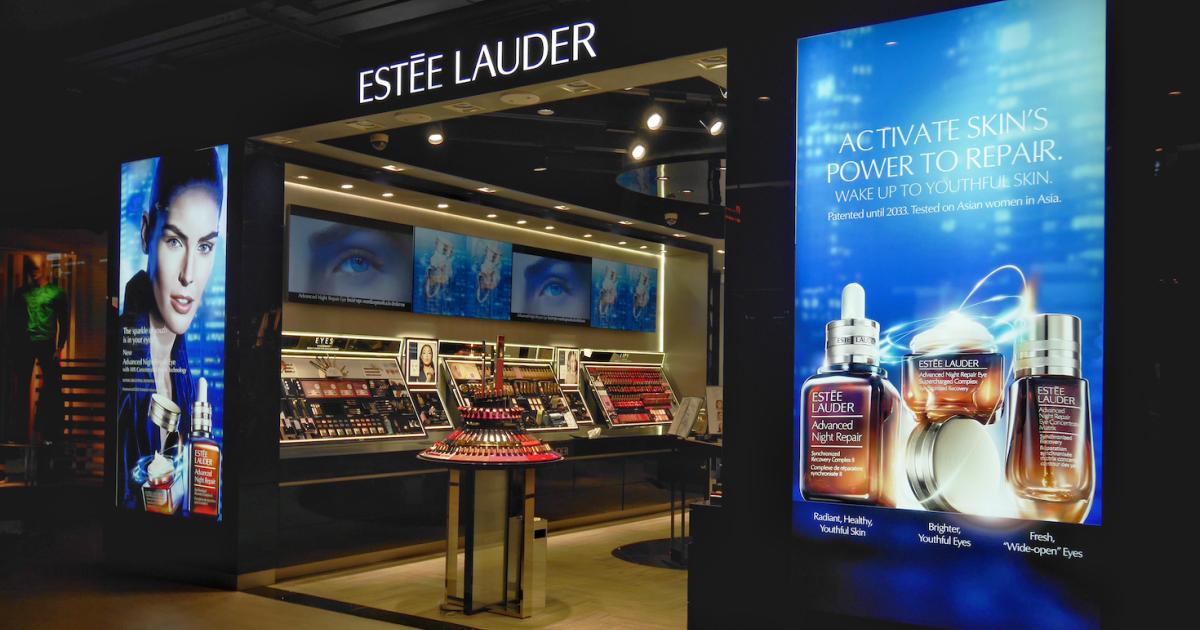Al Iannuzzi is vice president of sustainability at The Estée Lauder Companies, where he directs enterprise-wide sustainability efforts and establishes and executes on the company’s sustainability strategy, goals and objectives. He oversees the publication of the company’s corporate responsibility report, ESG ratings and rankings and climate and energy programs. He is also an adjunct professor at Indiana University, Purdue University, where he teaches product improvement and sustainability.
Iannuzzi has more than 30 years’ experience in the environment, health, safety and sustainability field. Prior to working at The Estée Lauder Companies, he worked for Johnson & Johnson, where he led design for the environment and green marketing programs and developed sustainability strategies for consumer product, medical device and pharmaceutical sectors. He served as chief architect of the Earthwards greener product development program. He has also worked as an environmental consultant and as a regulator for the New Jersey Department of Environmental Protection.
Iannuzzi has authored three books, his latest “Greener Products: the Making & Marketing of Sustainable Brands” (2018) and has written numerous articles on sustainability and product stewardship.
Bard MBA’s Jill Metzger speaks with Iannuzzi.
Jill Metzger: How does such a large global organization like Estée Lauder navigate a fast paced, ever evolving sustainability landscape?
Al Iannuzzi: One of the reasons I really love sustainability is it’s ever changing, right? Matter of fact, one of the things I like to say whenever I’m doing talks around this is that my belief is that there’s no such thing as a sustainable company. Sustainability is a journey. So every company can improve. The issues we are managing today weren’t even thought of five years ago. I’m always amazed how many new issues are coming at us all the time so it is extremely fast paced, to your point, and we need to set up processes to manage these things.
We developed an emerging sustainability trends process where we monitor what’s going on in the various aspects of our stakeholders. We look at where consumers are saying and we look at what investors are saying. We monitor what’s interesting to our employees. We look at what NGOs are saying and we kind of monitor that to find out what the trends are and we try to stay ahead of the trends. We kind of plot them to see where we have the biggest potential business impacts and which ones have the most speed. Then we try to put processes or guidelines in to try to address these even goals, or white papers to address these issues. But it is a daunting task. Sustainability is so broad, there’s so many issues and there’s always more issues to worry about and to manage.
Metzger: Are there any challenges that you’ve experienced either from an Estée Lauder perspective or just for the beauty space or the consumer goods space, overall?
Iannuzzi: Everything is challenging, but if you look at the biggest issue right from an environmental perspective, and everybody’s in the same boat, it’s with climate change and greenhouse gas emissions and how to reduce greenhouse gas emissions, and how to reduce them quickly. If you think about companies like ours, any manufacturing company, a majority of your emissions are coming from your supply chain and the raw materials you’re purchasing and from the goods and services that you’re purchasing. When we look at our emissions, that’s the biggest chunk of our emissions.
So, how do you crack that nut? It’s not easy and there’s new accounting rules coming out as we speak right now, and we’re trying to understand them. And we also have to think, “How are we going to get our suppliers to do the things that we’ve done?” We’ve achieved net zero for our own emissions and 100 percent renewable electricity for our own emissions.
Metzger: Can you talk through some of the other sustainability commitments you all have?
Iannuzzi: Yes. When I was brought on board, another funny story, that was October 2018, and I had a meeting with our CEO, and he’s like, “I’d like to have public facing sustainability goals.” And I’m like, “Yeah, sure. In about a year we’ll probably could have them. We’ll have to do materiality assessment, figure out what’s most important to us, and we’ll have to vet them and get their buy-in and cost estimates, etc etc.” And he’s like, “No, I’d like to have them in March for our investor day.” And I’m like, “OK, we’ll do it.” Because when the CEO says to do something, that’s when everybody, somehow magically, gets in line and things can go so fast.
We really did it, we set up 11 public facing sustainability goals. There were a couple of sustainability goals we had before I arrived, but we developed more, and we’ve even added on more just recently too. But one of the biggest ones is in the area of climate. So we had goals for net zero and renewable electricity, which we actually met last year, in November 2020, ahead of schedule. Then we set a goal to set a science-based target: we did that for our greenhouse gas emissions and we also got it approved by the Science Based Target Initiative which is a third party group of NGOs who approve of science based targets. We set goals on what we felt were the most important areas to our company.
Metzger: Are you finding that more and more consumers, over time, are interested in understanding the sustainability aspects or elements, not just of Estée Lauder as a brand and what you all stand for, but of specific products that they’re purchasing?
Iannuzzi: Yeah, we’re seeing a really strong desire from our consumers to want to purchase products from a company that they feel good about. So they want to purchase products from good corporate citizens. They want to make sure it’s real, that there’s no greenwashing going on. When we are talking about what we’re doing, we’re very careful on what we say publicly and how we engage our consumers. But especially the millennial consumers, we’re finding, are super interested in sustainability. But it’s across the board. It doesn’t matter, the segment of the consumer, they’re all super interested.
We sell prestige beauty products, so they’re very high end and they command a good price. So they’re expecting us to do these things and they’re expecting us to be good corporate actors, and thinking about the type of things that I just mentioned, those types of goals that we’ve set for ourselves.
Metzger: You have over 30 years of experience in this field, which is tremendous. I’m curious to hear how in your view, sustainability as a discipline or whatever you want to call it, has changed over the course of your career.
Iannuzzi: It’s quite amazing actually from when I first started. I also like to tell this story too. When I first started in the field, my education was environmental science, and primarily what we worked on was in minimizing the impacts at the manufacturing facility and the R&D facilities: reducing waste, reducing water. That was our world. We thought, “Oh, this is really awesome… how is hazardous waste being disposed of?” and it started like that.
We enabled a 22 megawatts wind farm to be built in Oklahoma, which provides enough electricity to cover our whole North American footprint.
Then the word sustainability started cropping up. And I remember having this discussion with one of my bosses back, maybe 25 years ago, and we’re like, “Don’t say sustainability to the management because when you talk to them, their eyes gloss over and they have no idea what you said. Talk about corporate citizenship or something like that!” And today, now everybody talks about sustainability and there’s all of these ratings. You’re rated on ESG ratings and rankings like the Dow Jones Sustainability Index, for example, and MSCI. There’s all these different ratings that are out there. And everybody knows about it. I mean, our CEO, he knows about it, he’s interested in this stuff.
So it’s really a quite amazing place with this journey of sustainability and where we are now, and how important it really is for people who lead sustainability in a company. My boss reports up to the CEO, the chief executive. I mean, that’s how important it is to the corporation.
Metzger: What do you hope to see in 2022, not just for Estée Lauder, but for the sustainability arena overall?
Iannuzzi: I hope to see more traction. A lot of companies have been criticized for setting long term goals, like 2050 goals, and not showing actions, like a short term action plan. So I think what I’d like to see, and I know we want to do this too, is transition plans to a low carbon economy. And I want to know, what are the levers you’re going to pull? What are the projects you’re going to execute on? And to see more recordings of actual accomplishments and initiatives.
For example, last year, we got a virtual power purchase agreement going. We enabled a 22 megawatts wind farm to be built in Oklahoma, which provides enough electricity to cover our whole North American footprint, so all of our electricity basically that we use in our home base. We’re based out of New York City and we have big manufacturing operations in Long Island and in other places in the United States and they’re covered by the renewable electricity that’s going into the grid.
So more of those types of projects, not only for ourselves but also for like-minded companies, or actually all companies. I like to see it in our suppliers and those types of things, so more of these tangible, real projects. I think that’s where we need to go and I think that’s where we’re all heading. So I’d like to see a lot more of that and just stronger commitments on sustainability in general and more fact-based, science-based improvements that you can speak to.
The above Q&A is an edited excerpt from the Bard MBA’s Feb. 18 The Impact Report podcast. The Impact Report brings together students and faculty in Bard’s MBA in Sustainability program with leaders in business, sustainability and social entrepreneurship. Listen to the full episode.
Credit: Source link



